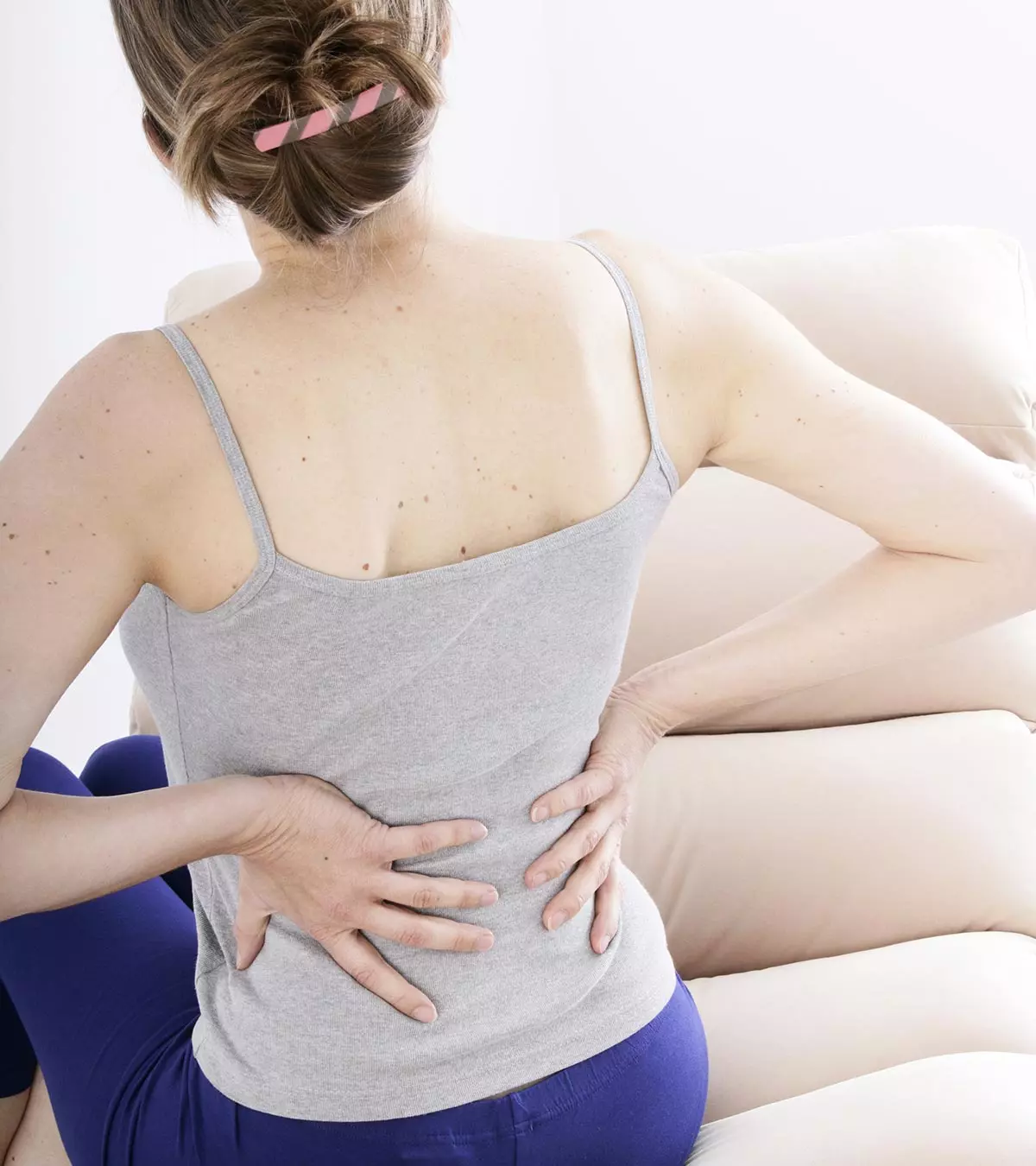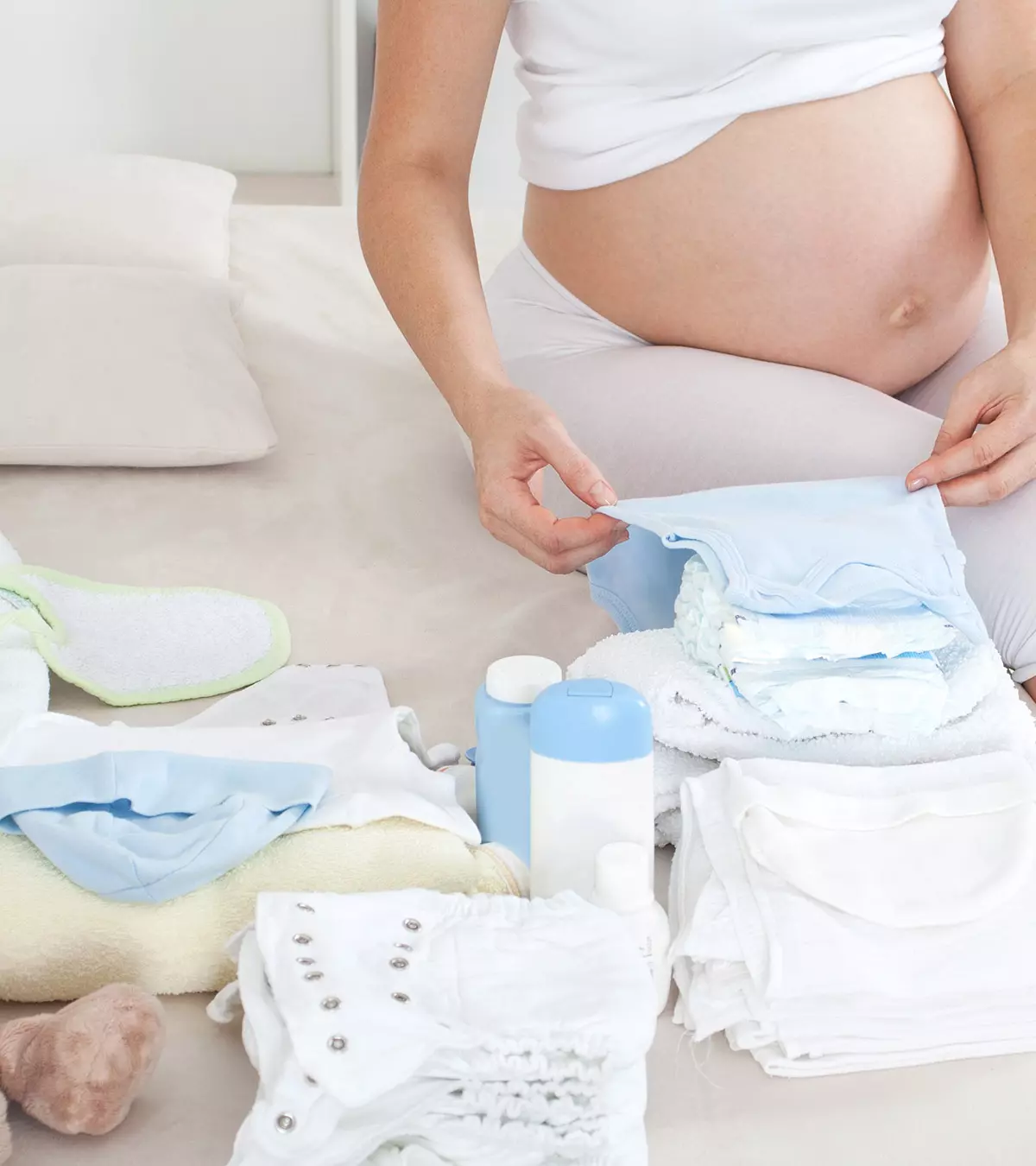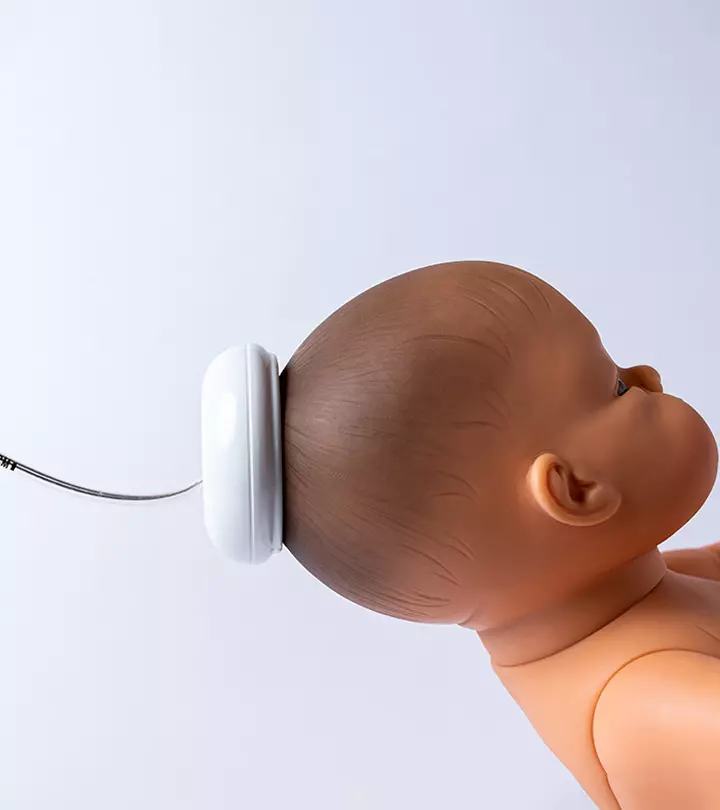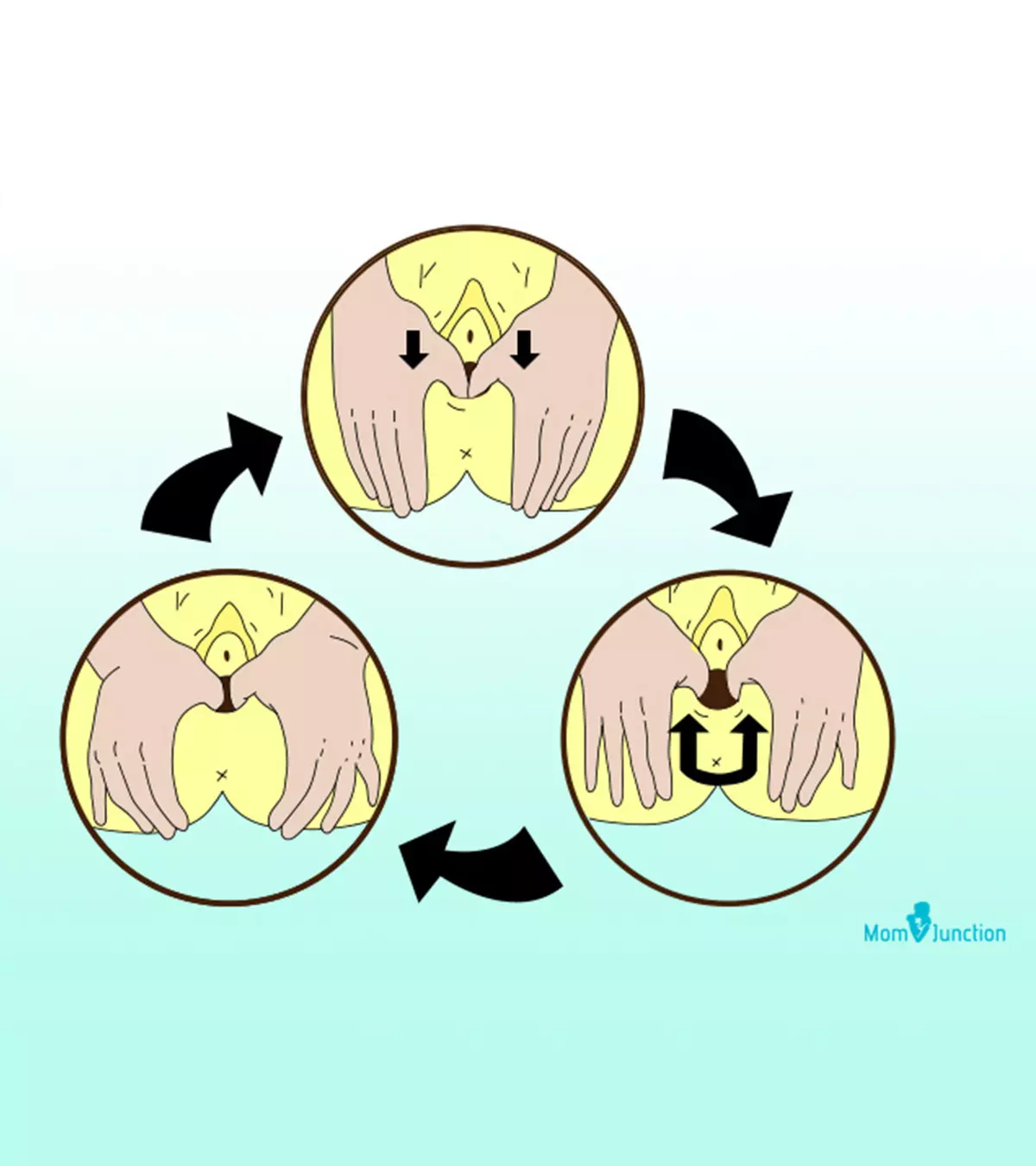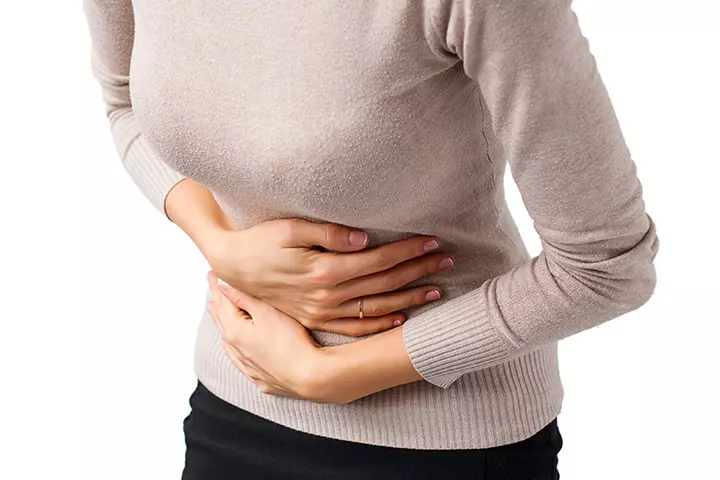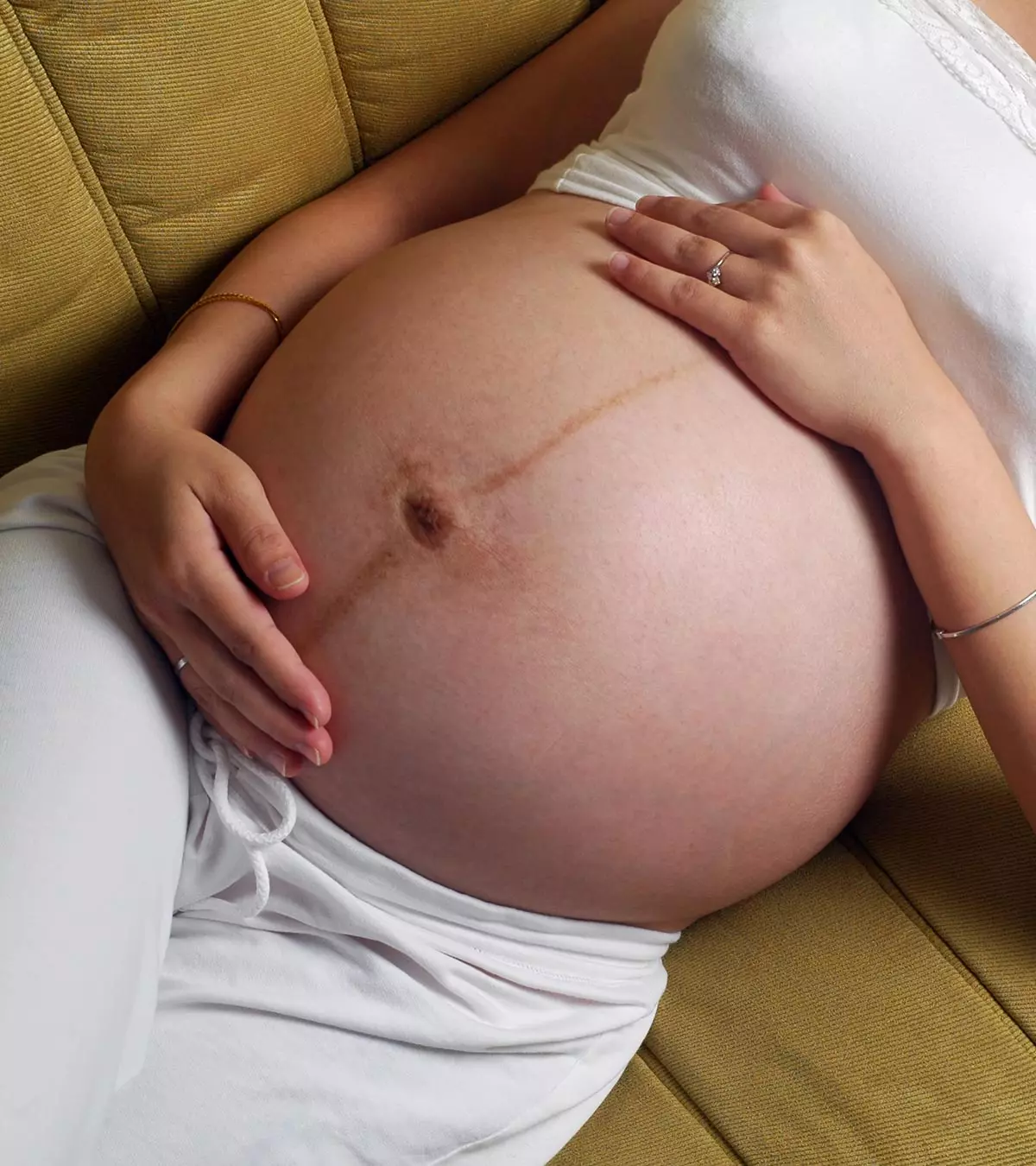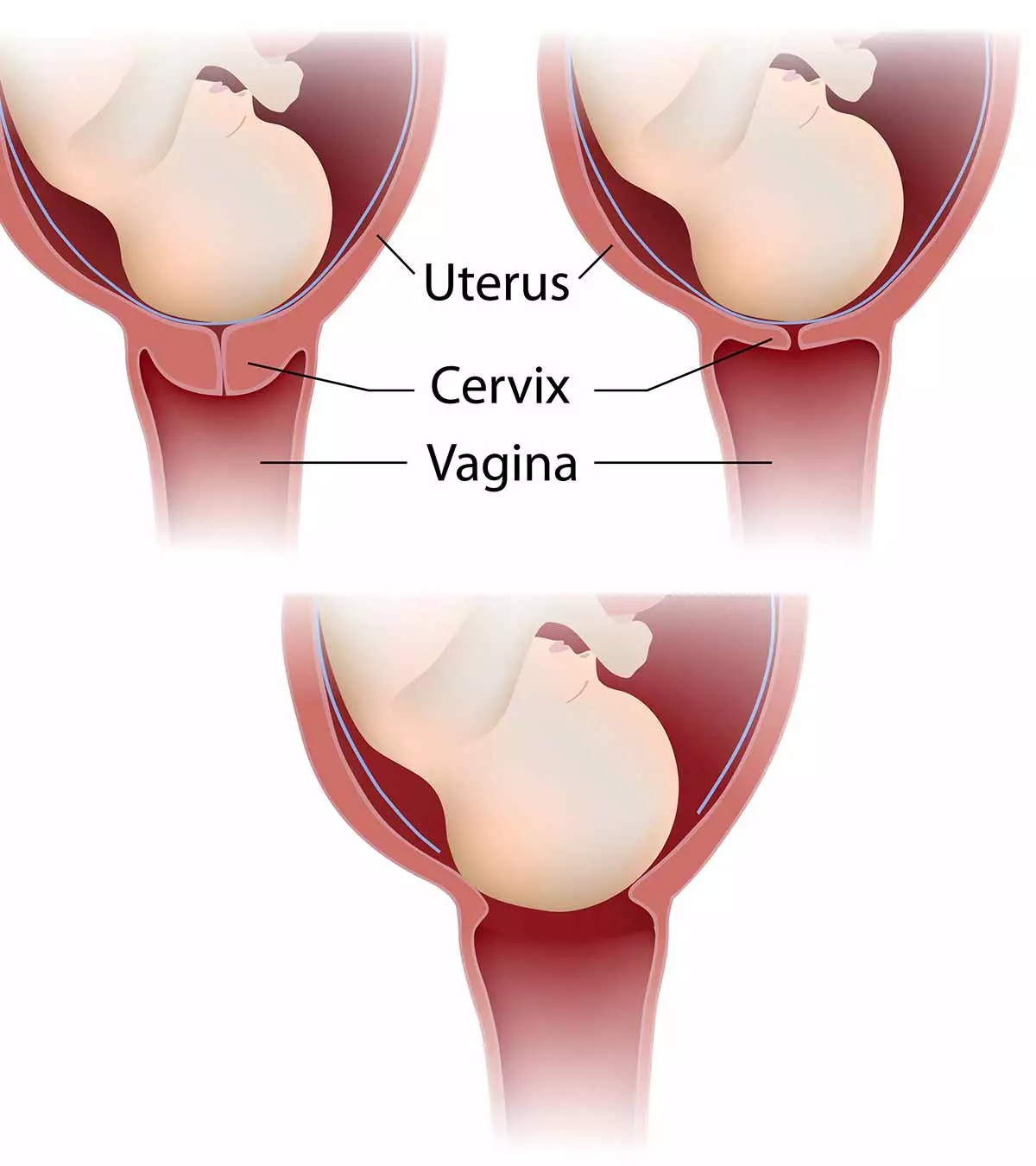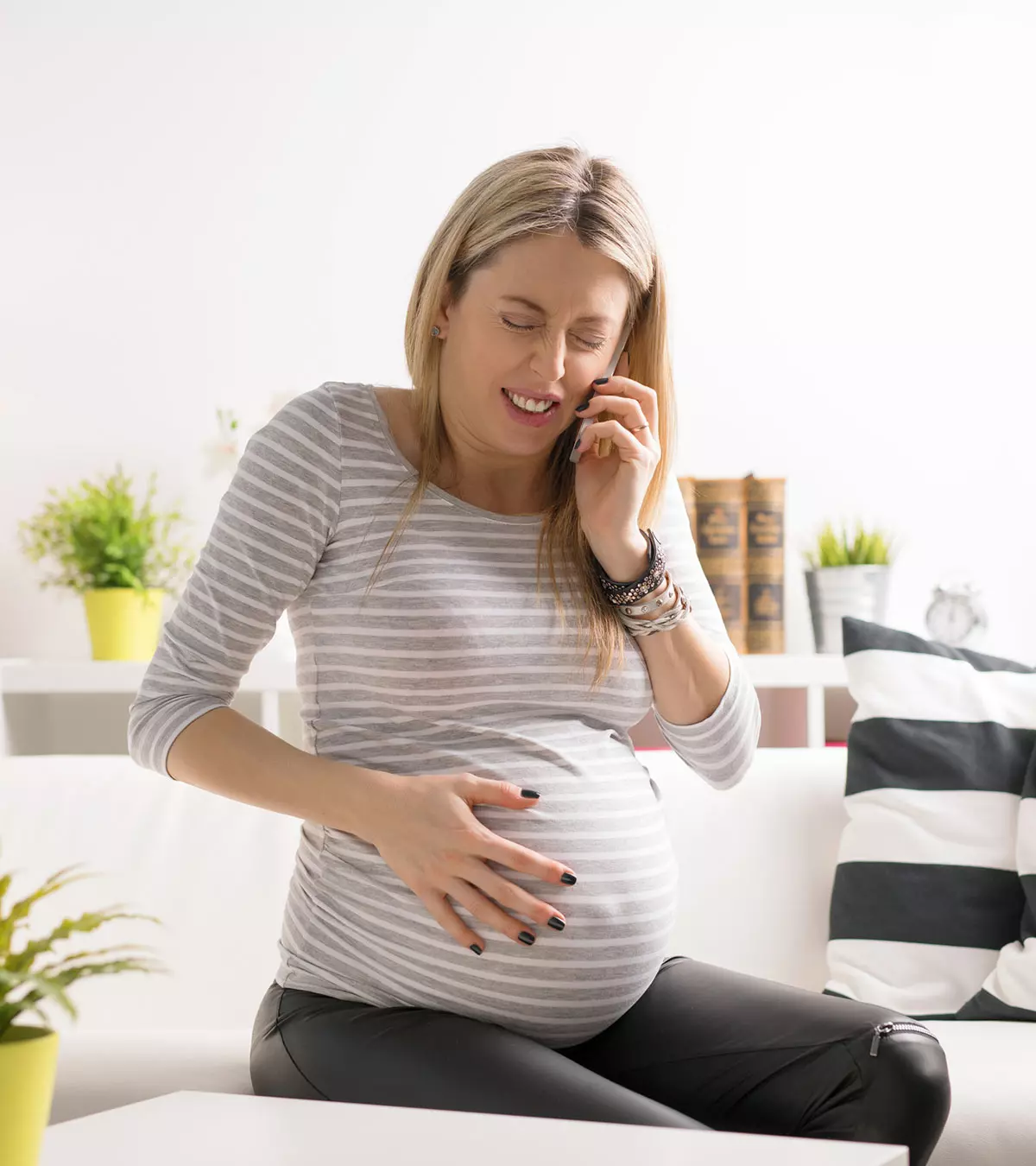
Image: ShutterStock
When does the baby drop? Women are often curious to know the answer. The baby usually drops into the pelvis in the final weeks of pregnancy, but some may drop just a few hours before birth (1). Baby drop is an indication that the body is ready for labor and the baby is taking its final position in the uterus before passing through the birthing canal which leads to the relaxation and effacement of the cervix (2). Predicting the actual time of the baby’s birth may be difficult, but the baby’s descent is a good sign for mothers to prepare for their delivery. Knowing the sign of this occurrence before going into labor can help ease your anxiety and help you prepare for childbirth. You may read this post to understand the signs of baby drop, how the baby changes its position to move towards labor, and what you can do to ensure the baby gets into the right birthing position.

Key Pointers
- Baby dropping is when the baby’s head moves down towards the pelvis at the end of pregnancy.
- This typically happens between 34-36 weeks, but can also occur just before labor.
- Women may experience intense pelvic pressure and frequent urination when the baby drops.
- Squatting or sitting with knees apart and leaning forward can help the baby drop faster.
When Does The Baby Drop?
Baby dropping, also called lightening, happens between the 34th and 36th week of pregnancy (3). While many believe that the baby dropping means that the labor has started, it is not the case. Baby dropping usually indicates that your labor is approaching. In some women, the baby may get into the position just a few hours before the onset of labor. In first-time pregnancies, the baby usually drops earlier than in later pregnancies. If this is your first baby, you can expect it to move into the pelvis about two to four weeks before delivery, though it may happen sooner. However, if you have given birth before, the baby might not drop until labor begins (4). If you feel that your baby has dropped, then check with your doctor about the position of the baby.
A mother and blogger experienced baby dropping in several of her pregnancies. She says, “Today I went to my 34-week appointment… Last Wed, my baby dropped. I could feel the pressure, especially when walking. It is routine for me, so I won’t get excited that it means he is coming soon. He still needs to grow some before he comes, anyway. My last several babies have dropped at 34 weeks, leaving me to waddle like a duck for six weeks before they come into the world (i).”
 Quick fact
Quick factHow Does A Baby’s Position Progress Towards Labor?
Usually, babies assume different positions inside the womb, but towards the due date they settle down into the pelvis in a head-down position. A baby’s movement into the pelvis is described based on stations, which is a standard measurement in gynecology (3). The stations at which the baby’s head is positioned range from -3 to +3.
- The highest station is -3, which indicates that the baby is not engaged in the pelvis or its head is above the pelvis.
- +3 indicates that the baby is right into the birthing canal, with the head starting to emerge from the birthing canal.
- The 0 station indicates that the baby is fully engaged, with the head at the bottom of the pelvis.
What Are The Signs Of Baby Dropping During Pregnancy?
Florida-based physician Dr. Matthew Casavant opines, “Baby dropping is one of many signs that labor is approaching. However, only about 5% of babies are born on their exact due date. Labor typically begins when the baby is ready, usually within two weeks of the due date for a first pregnancy.”
As the baby drops down, you can notice the following changes in your body (3) (5).
- Visible change in the abdomen: You can notice your belly hanging lower than it did before.
- Breathing gets easier: As the baby eases pressure on the diaphragm, breathing gets easier.
- Pressure on the pelvis: You can feel an increased pressure and pain in the pelvis as the baby drops lower.
- Increased vaginal discharge: As the baby gets fully engaged in the pelvis, it puts pressure on the cervix for dilation, and you lose the mucus plug, which is a thick, pink and jelly-like discharge. This mucus plug keeps the cervical opening blocked during pregnancy to prevent any bacteria from entering the uterus (6).
- Frequent urination: With the baby’s head exerting pressure on the bladder, the urge for urination increases.
- Backache: Extra pressure on the lower back muscles causes the pain.
- Leg cramps: You may experience general swelling or cramping in your legs. One leg may feel more swollen or cramped than the other, causing discomfort.
- Less heartburn and stomach pressure: With the baby dropping down, the pressure on the stomach and heartburn ease (4).
In the case of frequent or constant pain, fluid leak, or bleeding, go to the doctor. Sometimes, even with the due date nearing, the baby may not drop into the pelvis until labor begins, and this can be perfectly normal. Consult your doctor if you have concerns about your baby’s position or labor progression.
How Can You Make Your Baby Drop?
If your baby hasn’t moved into the pelvis by 36 weeks of pregnancy, don’t worry. Every pregnancy is different and hence some babies drop earlier, while others may not engage until labor begins. However, certain movements and lifestyle adjustments can encourage the baby to descend naturally. Here’s what you can try (7):
- Indulge in physical activities to open up the cervix. But avoid engagement in strenuous ones.
- Avoid sitting cross-legged as it can push the baby back. Sitting with the knees apart and leaning forward can make the baby move down into the pelvis.
- Using a birthing ball helps move the baby to the pelvis and also reduces back pain.
- Squats help in opening the pelvis and strengthening the pelvic muscles. This helps move the baby closer to the pelvis. However, avoid deep squats.
- Lie on the left side with cushions between the knees.
- Swim or float with your belly facing upward. Avoid breaststrokes in case of pelvic pain.
- If your work needs you to sit for long at one place, make sure to take breaks and move around at regular intervals.
- You may also see a certified chiropractor.
What Should You Do When The Baby Drops?
If you feel that your baby has dropped, visit the doctor first. Pay attention to any new changes, such as increased pelvic pressure, frequent urination, or the loss of the mucus plug. If you experience regular contractions, severe pelvic pain, or fluid leakage, contact your doctor immediately, as these could be signs of labor (10). Your doctor can track the development and let you know about the tentative date for labor. You should also start preparing for labor and discuss a birth plan. It is important to note that the signs of baby dropping before 30 weeks of pregnancy may indicate preterm birth–seek immediate medical attention to prevent premature delivery in such a case.
Frequently Asked Questions
1. Can I still feel my baby move after they drop?
Yes, baby movements are felt even after they drop. The baby may seem slightly less active as labor approaches, but there will be movements several times an hour. Therefore, you should contact your doctor immediately if the movements seem markedly less (11).
2. Can I still exercise after my baby drops?
Exercising throughout pregnancy is usually not considered harmful in uncomplicated pregnancies (12). However, whether or not to exercise after your baby drops depends on your health status and the intensity of your exercise. If you experience pain or discomfort while exercising, you should discontinue and consult your doctor.
Baby drop is an indication that you are close to holding your baby in your arms. To know when the baby drops, stay alert and mindful of the common signs such as increased urination, discharge, changed shape of the belly, and other noticeable symptoms. This will help you and your doctor prepare for your baby’s arrival and ensure a smooth delivery. If the baby drop does not occur within 34th to 36th week, stay calm and consult your doctor and follow the required measures that may help start the process.
Infographic: Baby Dropping: Be Prepared For The Labor And Delivery
Baby dropping, also known as ‘lightening,’ is one of the signs that indicate your little ones’ arrival is nearing. Scour through this infographic to learn about the helpful tips to prepare yourself for labor and delivery procedures.
Some thing wrong with infographic shortcode. please verify shortcode syntax
Illustration: Baby Dropping: When Does It Happen And How To Know
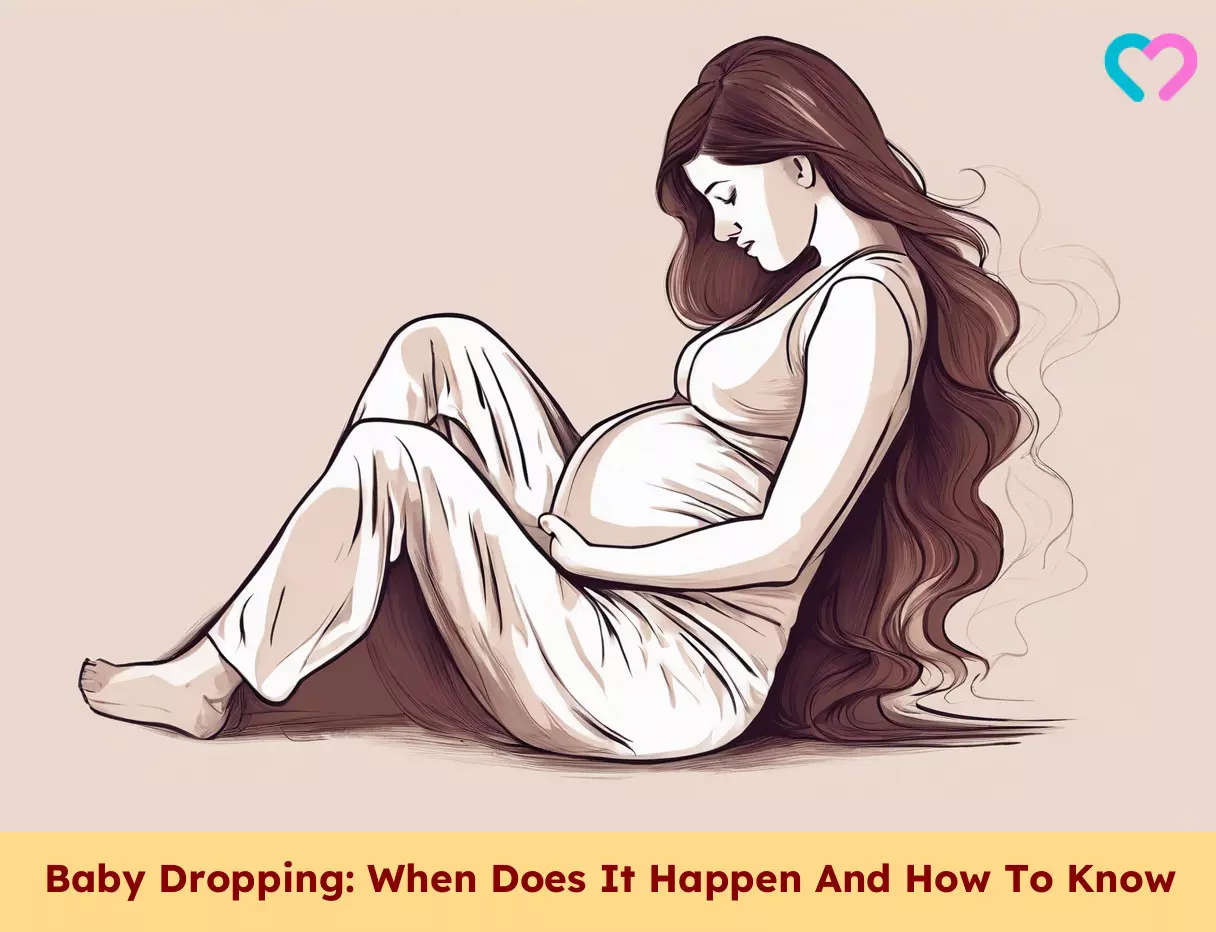
Image: Stable Diffusion/MomJunction Design Team
Are you wondering if your baby has dropped? Learn more about the signs of lightening to look out for in this comprehensive video.
Personal Experience: Source
MomJunction articles include first-hand experiences to provide you with better insights through real-life narratives. Here are the sources of personal accounts referenced in this article.
i. Baby dropped ~ what does that mean?https://myfatherssheep.blogspot.com/2014/11/baby-dropped-wha-does-that-meanthey-can.html
References
- Lightening in Pregnancy: When Does Baby Drop?
https://www.healthystarthhp.org/lightening-in-pregnancy/ - Changes in Your Body During Pregnancy: Third Trimester.
https://familydoctor.org/changes-in-your-body-during-pregnancy-third-trimester/ - Pregnancy: Dropping (Lightening).
https://www.uofmhealth.org/health-library/aa88159 - Pregnancy: Dropping (Lightening).
https://www.cham.org/HealthwiseArticle.aspx?id=aa88159#:~:text=At%20the%20end%20of%20the - Changes In Your Body.
https://www.urmc.rochester.edu/medialibraries/urmcmedia/ob-gyn/midwifery/resources/documents/9thmonthofpregnancy.pdf - Signs of Labor.
https://americanpregnancy.org/healthy-pregnancy/labor-and-birth/signs-of-labor/ - Baby positions in the womb before birth.
https://www.nct.org.uk/labour-birth/getting-ready-for-birth/tips-how-get-your-back-back-baby-position-for-birth - Mohaddese Mahboubi; (2019); Evening Primrose (Oenothera biennis) Oil in Management of Female Ailments.
https://www.ncbi.nlm.nih.gov/pmc/articles/PMC6718646/ - Cervical Ripening.
https://my.clevelandclinic.org/health/treatments/22165-cervical-ripening - Labor and Delivery.
https://www.nichd.nih.gov/health/topics/factsheets/labor-delivery - Calculating Your Baby’s Due Date.
https://www.womenandinfants.org/services/pregnancy/pregnancy-planner - Exercise in pregnancy.
https://www.nhs.uk/pregnancy/keeping-well/exercise/
Community Experiences
Join the conversation and become a part of our nurturing community! Share your stories, experiences, and insights to connect with fellow parents.
Read full bio of Dr. Stuart J. Fischbein
- Dr. Matthew Casavant is the founding physician of South Lake OB/GYN & Advanced Surgery. He received his medical degree from Nova Southeastern University in South Florida and completed his residency as an Ob/Gyn at St. Vincent’s /Mercy Hospital in Toledo, OH. Dr. Casavant also holds a BS degree in Micro and Molecular Biology.
 Dr. Matthew Casavant is the founding physician of South Lake OB/GYN & Advanced Surgery. He received his medical degree from Nova Southeastern University in South Florida and completed his residency as an Ob/Gyn at St. Vincent’s /Mercy Hospital in Toledo, OH. Dr. Casavant also holds a BS degree in Micro and Molecular Biology.
Dr. Matthew Casavant is the founding physician of South Lake OB/GYN & Advanced Surgery. He received his medical degree from Nova Southeastern University in South Florida and completed his residency as an Ob/Gyn at St. Vincent’s /Mercy Hospital in Toledo, OH. Dr. Casavant also holds a BS degree in Micro and Molecular Biology.
Read full bio of shreeja pillai
Read full bio of Rebecca Malachi
Read full bio of Aneesha Amonz

 Research finds
Research finds



